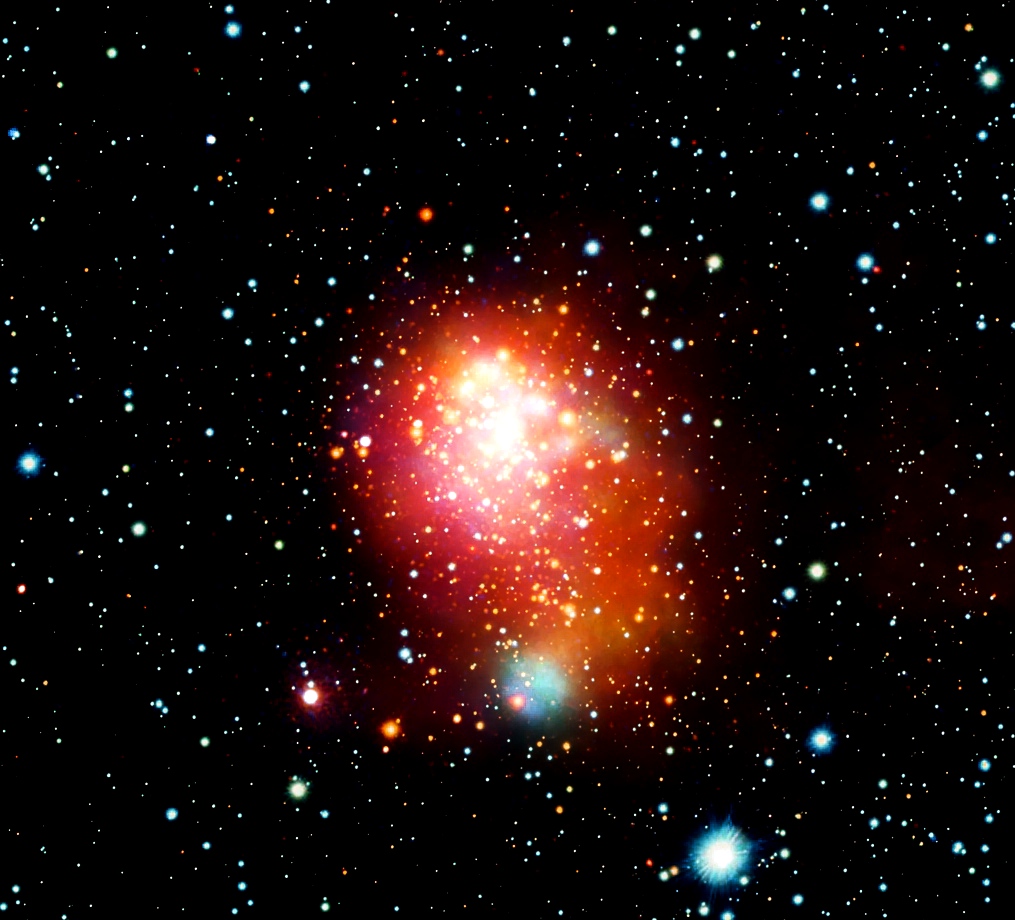Manashimaya
‘Super’ Star Cluster Shines in New Look From NASA’s Chandra

NASA’s Chandra X-ray Observatory has unveiled stunning new data on the Westerlund 1 star cluster, the largest and closest “super” star cluster to Earth. This fresh insight, combined with observations from other NASA telescopes, provides an unprecedented look into this vibrant stellar nursery, where stars are formed in great numbers.
Westerlund 1: A Stellar Nursery
Westerlund 1 is a young star cluster that is between 3 and 5 million years old. It is located approximately 13,000 light-years away from Earth. It is the nearest and most massive super star cluster in our galaxy, with a mass of between 50,000 and 100,000 Suns. Understanding the Milky Way’s star formation history requires an understanding of these clusters. In sharp contrast to the pinnacle of star formation approximately 10 billion years ago, star formation is now limited to a few stars per year in our galaxy.
The EWOCS Project
The new data comes from the Extended Westerlund 1 and 2 Open Clusters Survey (EWOCS), a project spearheaded by astronomers from the Italian National Institute of Astrophysics in Palermo. Chandra observed Westerlund 1 for a total of 12 days, providing deep insights into the cluster. This project aims to delve into the environment of super star clusters to understand star and planet formation processes.
A Detailed Look at Westerlund 1
The new image of Westerlund 1 combines deep Chandra data with previous data from NASA’s Hubble Space Telescope. Chandra’s X-ray detections highlight young stars, visible as white and pink, along with diffuse heated gas in shades of pink,
green, and blue, indicating increasing gas temperatures. Hubble’s data reveals many stars as yellow and blue dots.
The Chandra data has significantly increased the number of known X-ray sources in the cluster, from 1,721 to nearly 6,000, including many fainter stars with lower masses than the Sun. Among these, 1,075 stars are densely packed within a four -light-year radius at the cluster’s core, comparable to the distance between the Sun and the nearest star, illustrating just how crowded this region is.
New Discoveries and Future Research
The observation of a hot gas halo encircling Westerlund 1’s center is one of the ground-breaking findings from the EWOCS data. It is anticipated that this halo will be essential to comprehend the creation, evolution, and mass estimation of the cluster.
The preliminary results of the survey, which Mario Guarcello reported in a paper published in the journal Astronomy and Astrophysics, open the door to more investigation. Subsequent research articles will examine in greater detail the most luminous X-ray sources and extra EWOCS observations, utilizing information from NICER (Neutron Star Interior Composition Explorer) and NASA’s James Webb Space Telescope.
The Significance of Westerlund 1
Westerlund 1 offers a unique opportunity to study the conditions and processes that govern star formation and evolution. As the largest and closest super star cluster, it provides valuable clues about the era when our galaxy was a bustling hub of star formation. The new deep Chandra data not only triples the number of known X-ray sources in the cluster but also reveals intricate details about its internal structure and surrounding environment.
As scientists continue to analyze the EWOCS data, Westerlund 1 will undoubtedly shed light on the mysteries of stellar birth and development, offering a glimpse into the dynamic processes that shaped our Milky Way.
In summary, the ‘Super’ Star Cluster Shines in New Look From NASA’s Chandra, highlights the cutting-edge research and discoveries that continue to expand our understanding of the cosmos.
